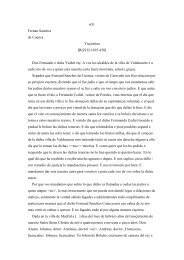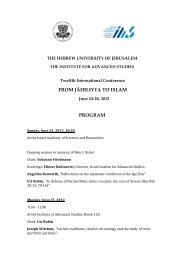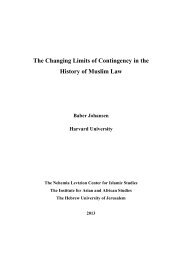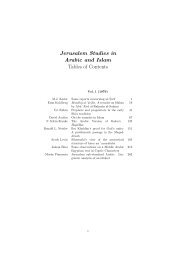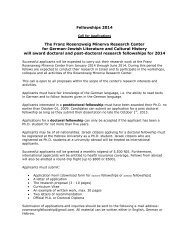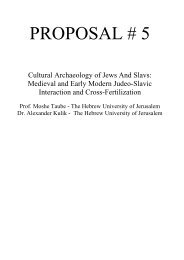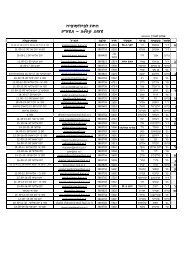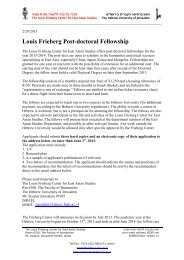Proverbs 7 in MT and LXX: Form and Content
Proverbs 7 in MT and LXX: Form and Content
Proverbs 7 in MT and LXX: Form and Content
You also want an ePaper? Increase the reach of your titles
YUMPU automatically turns print PDFs into web optimized ePapers that Google loves.
148<br />
Tova Forti <strong>and</strong> Zipora Talshir<br />
Verse 8<br />
1 <br />
<br />
b a *<br />
>8!+*$6 a "*<br />
<br />
% > * ++%<br />
a’ b’ *<br />
a<br />
Vv. 6–7, which form a cont<strong>in</strong>uous long sentence <strong>in</strong> the <strong>LXX</strong>, cont<strong>in</strong>ue <strong>in</strong> v. 8<br />
with the participle , referr<strong>in</strong>g to the lad just mentioned <strong>in</strong><br />
v. 7. The parallelism disappears once aga<strong>in</strong>: the Greek offers a s<strong>in</strong>gle verb—<br />
the participle at the beg<strong>in</strong>n<strong>in</strong>g of the verse—<strong>in</strong>stead of the pair // % ,<br />
<strong>and</strong> the parallel specifications regard<strong>in</strong>g the whereabouts of the lad—<br />
% // —are conflated, leav<strong>in</strong>g out altogether:<br />
“pass<strong>in</strong>g by the corner <strong>in</strong> the passages of her houses.” 43 S<strong>in</strong>ce the follow<strong>in</strong>g<br />
verse beg<strong>in</strong>s with a verb unparalleled <strong>in</strong> the <strong>MT</strong> ( ), it has been<br />
argued that it is a reflection of % , which has no counterpart here.<br />
However, these two modifications are hardly connected. It would seem that<br />
the two verbs were rather strung together, as is done with other parallel<br />
elements <strong>in</strong> the adjacent verses. In fact, there rema<strong>in</strong>s no room for a second<br />
verb, s<strong>in</strong>ce the parallel place specifications, too, have been conflated.<br />
One wonders where the plural 1 —for %—<br />
came from. The translator may have understood % literally (‘way’ rather<br />
than ‘by’), <strong>in</strong>fluenced by vv. 25 <strong>and</strong> 27. In addition, a different read<strong>in</strong>g may<br />
be <strong>in</strong>volved— <strong>in</strong>stead of —a simple enough metathesis variant. In<br />
any case, the result is an <strong>in</strong>tensification of the picture: the lad seems to be<br />
trapped <strong>in</strong> between the passages to the houses of this powerful woman.<br />
43 One can hardly deduce <strong>in</strong> the framework of this translation whether was<br />
read with or without the mappik, as argued by Baumgartner, Étude critique.





